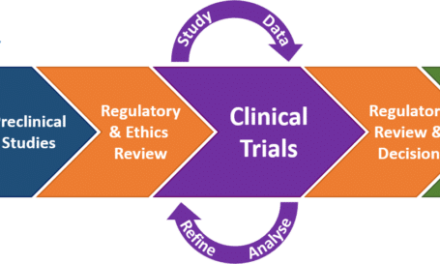
What is the impact of automation on medical device production?

Automation has significantly transformed medical device production, enhancing efficiency, precision, scalability, and compliance with regulatory standards. As the industry faces increasing demand for high-quality devices, automation plays a pivotal role in streamlining operations and meeting stringent requirements. Here’s an in-depth look at its impact:
1. Increased Efficiency and Productivity:
- Faster Production Rates: Automation reduces the time required for manufacturing processes, enabling higher production volumes.
- 24/7 Operation: Automated systems can operate continuously without breaks, maximizing output.
- Reduced Downtime: Predictive maintenance tools in automated systems minimize unplanned downtime.
2. Improved Precision and Consistency:
- Minimized Human Error: Automated processes ensure consistent production, reducing variability caused by manual operations.
- Micron-Level Precision: Advanced robotics and CNC machines achieve extremely high accuracy, critical for complex or miniature devices like implants and surgical instruments.
- Repeatability: Automation ensures every device produced meets exact specifications, vital for regulatory compliance.
3. Enhanced Quality Control:
- Automated Inspection: Vision systems and AI-driven quality control tools detect defects at various production stages, ensuring only high-quality devices are released.
- Real-Time Monitoring: Sensors integrated into automated systems provide real-time data on process parameters, enabling immediate adjustments.
- Data Logging: Automation ensures comprehensive documentation for traceability and regulatory audits.
4. Cost Reduction:
- Lower Labor Costs: Automation reduces reliance on manual labor for repetitive tasks, lowering overall production costs.
- Material Optimization: Automated systems reduce material waste through precise usage and minimal errors.
- Scalability: High-volume production becomes more cost-effective with automation.
5. Scalability and Flexibility:
- Rapid Scaling: Automated systems can quickly scale production to meet market demands, such as during public health emergencies.
- Flexibility in Design: Reconfigurable systems allow manufacturers to switch between product lines with minimal downtime, enabling production of customized or limited-edition devices.
6. Compliance with Regulatory Standards:
- Consistent Documentation: Automated systems generate detailed records of production processes, essential for compliance with FDA, EU MDR, and ISO standards.
- Process Validation: Automation ensures that validated processes are followed exactly, reducing risks during audits.
- Sterile Manufacturing: Automation minimizes human intervention, which is crucial for maintaining sterility in implantable and disposable devices.
7. Integration of Advanced Technologies:
- Robotics: Robotic arms are widely used for assembly, material handling, and inspection, ensuring precision and speed.
- IoT and Smart Manufacturing: Internet of Things (IoT)-enabled devices provide real-time analytics, predictive maintenance, and seamless integration across the production line.
- AI and Machine Learning: These technologies optimize workflows, predict defects, and improve decision-making processes in manufacturing.
8. Enhanced Safety:
- Worker Safety: Automation reduces exposure to hazardous environments or materials, improving worker safety.
- Device Safety: Consistent production and rigorous automated testing enhance the safety and reliability of medical devices.
9. Sustainability:
- Energy Efficiency: Automated systems are often optimized for energy-efficient operations.
- Waste Reduction: Precise material usage and improved quality control reduce waste, contributing to sustainability goals.
10. Faster Time-to-Market:
- Rapid Prototyping: Automated 3D printing and additive manufacturing accelerate the prototyping phase.
- Streamlined Processes: Automation reduces production bottlenecks, allowing quicker scaling from prototype to full production.
11. Challenges and Considerations:
- High Initial Investment: Setting up automated systems requires significant capital expenditure.
- Skilled Workforce: Automation necessitates a workforce skilled in operating, maintaining, and troubleshooting advanced systems.
- Integration Complexity: Implementing automation into existing workflows can be challenging and requires careful planning.
- Cybersecurity Risks: IoT-enabled systems are susceptible to cyberattacks, necessitating robust security measures.
12. Real-World Examples:
- Robotic Surgery Tools: Automated systems are used to manufacture high-precision robotic surgical instruments.
- Diagnostic Devices: Automation is critical for producing devices like blood glucose monitors and rapid diagnostic kits at scale.
- Wearables: Automated processes are used to assemble compact, intricate wearable health devices, such as smartwatches and fitness trackers.
Automation has a transformative impact on medical device production by improving efficiency, precision, and compliance while reducing costs and time-to-market. As the industry continues to evolve, automation will play an increasingly central role, particularly with the integration of advanced technologies like AI, robotics, and IoT. While there are challenges, the long-term benefits of automation make it an essential component of modern medical device manufacturing.




























